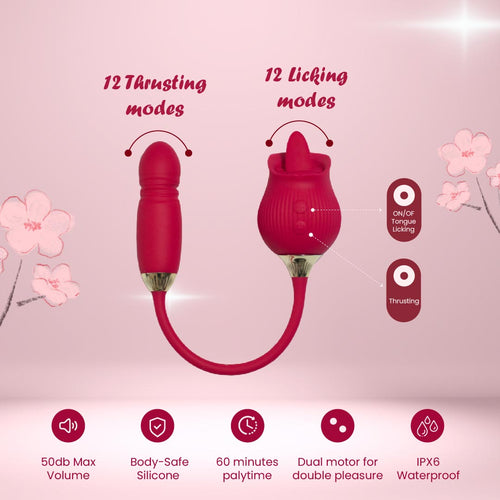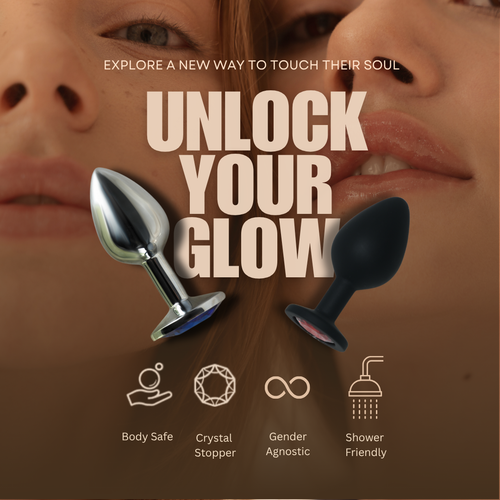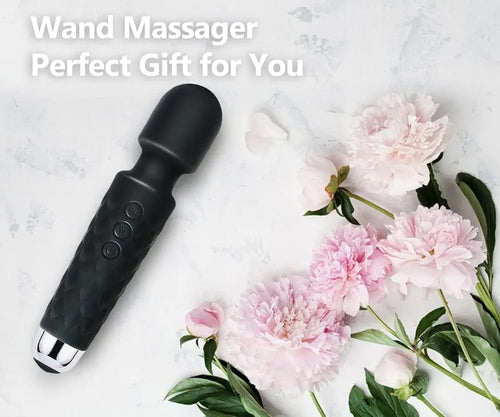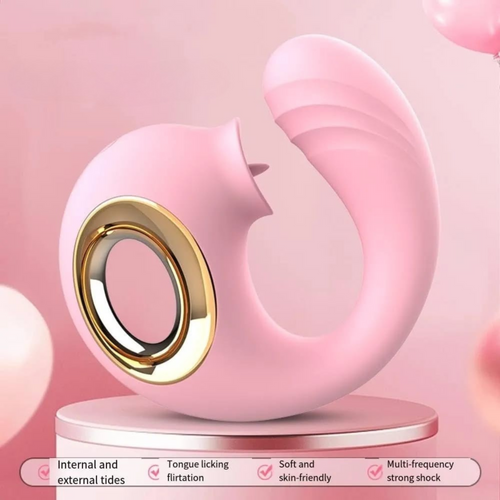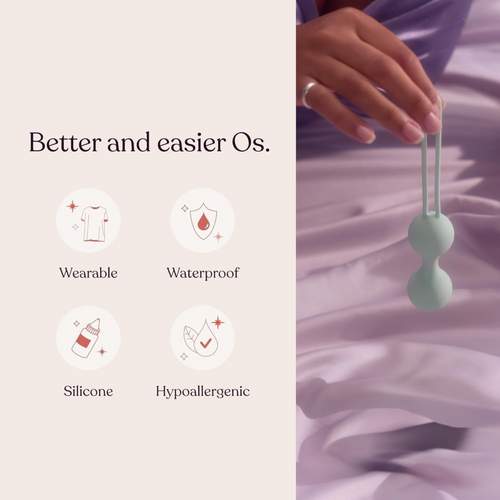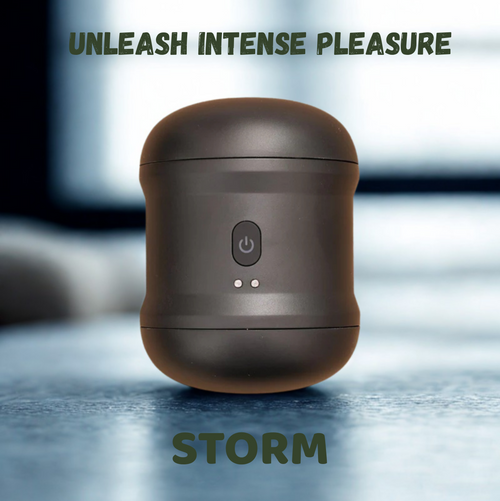
Safer Sex 101: Essential Tips for Protection, Pleasure, and Peace of Mind
Ever had that moment where your heart races because a condom broke or you forgot protection entirely? You're not alone – 66% of sexually active adults have experienced a birth control "close call" at least once.
Let's fix that. This guide gives you everything needed for safer sex that doesn't compromise on pleasure – practical protection methods, communication tips, and confidence boosters that actually work in real-life situations.
Safer sex isn't just about avoiding pregnancy or STIs (though that's obviously important). It's about creating a space where you can fully enjoy the experience without that voice in your head wondering "what if?"
The difference between good sex and great sex often comes down to one thing most people completely overlook. And no, it's not what you're thinking...
Understanding the Basics of Safer Sex
Why Protection Matters for Everyone
Real talk: nobody plans on getting an STI or dealing with an unplanned pregnancy. Yet here we are in 2025, and the CDC reports that over 2 million new STI cases are diagnosed annually. These aren't just numbers – they're real people whose lives changed after a single encounter.
Protection isn't just for "certain types" of people or relationships. Whether you're having casual hookups or you're in a committed relationship, safer sex practices benefit everyone. Your sexual health directly impacts your overall wellbeing, relationships, and future plans.
And it's not just about avoiding problems. When you're confident you're protected, you can actually enjoy sex more. Nothing kills the mood faster than worrying about consequences in the back of your mind.
Common Misconceptions About Safe Sex
"I can tell if someone has an STI by looking" – nope, absolutely not. Many STIs have zero visible symptoms but can still be transmitted.
"Withdrawal is effective birth control" – sorry to burst your bubble, but pre-ejaculate can contain sperm and STIs.
"STIs only happen to promiscuous people" – wrong again. It only takes one partner to transmit an infection.
"We're both virgins so we don't need protection" – "virgin" is a fuzzy concept, and some STIs can be transmitted non-sexually.
"You can't get pregnant the first time" – your reproductive system doesn't care if it's your first rodeo or your fiftieth.
Different Types of Sexual Activities and Their Risk Levels
Not all sexual activities carry the same risk. Understanding these differences helps you make informed choices:
|
Activity |
STI Risk |
Pregnancy Risk |
|
Manual stimulation |
Very low |
None |
|
Oral sex |
Low to moderate |
None |
|
Vaginal intercourse |
High |
High |
|
Anal intercourse |
High |
None |
|
Dry humping (clothed) |
Very low |
Very low |
Risk factors change based on barrier protection, contraception use, and whether partners have been tested recently.
When to Have "The Talk" About Protection
The ideal time to discuss protection is before clothes start coming off. Seriously. Waiting until you're in the heat of the moment puts pressure on everyone and leads to poor decisions.
Try bringing it up naturally: "I brought condoms, do you have a preference on type?" or "I've been tested recently, have you?"
If someone pushes back against having this conversation or using protection, that's a major red flag. Anyone worth being intimate with will respect your boundaries and health concerns.
Remember, awkward conversations last minutes, but STIs and unplanned pregnancies can last much longer.
Comprehensive Guide to Barrier Methods
A. Condoms: Types, Proper Usage, and Effectiveness
Condoms are your sexual safety superheroes – thin but mighty barriers that prevent pregnancy and STIs. They come in three main types:
-
Latex condoms: The most common choice, offering excellent protection. Just remember, they don't play nice with oil-based lubricants.
-
Non-latex condoms: Made from materials like polyurethane or polyisoprene, these are perfect for folks with latex allergies. They tend to be slightly thinner and conduct heat better (hello, increased sensitivity!).
-
Lambskin condoms: These prevent pregnancy but don't block STIs. They're basically the "I'll protect you from babies but not herpes" option.
Condoms come in various sizes, textures, and flavors. Finding your perfect fit matters – too tight and it might break, too loose and it could slip off during the action.
How to use a condom correctly:
-
Check the expiration date
-
Open the package carefully (teeth and scissors are condom enemies)
-
Make sure it's right-side out
-
Pinch the tip to leave space for fluid
-
Roll it all the way down
-
After sex, hold the base while withdrawing
-
Wrap and toss in the trash (not the toilet!)
When used perfectly, condoms are about 98% effective at preventing pregnancy. But in real life with typical use? That drops to about 85%. The gap exists because people make mistakes – putting them on too late, not using them every time, or storing them improperly.
B. Dental Dams: What They Are and How to Use Them
Dental dams don't get nearly enough credit in the safer sex conversation. These thin, square sheets of latex or polyurethane create a barrier between mouths and genitals during oral sex, protecting both partners from STIs.
Think of them as the unsung heroes of oral protection – especially for vulva-owners and during rimming (anal-oral contact).
How to use a dental dam:
-
Take it out of the package and unfold it completely
-
Place it over the vulva or anus
-
Hold it in place during the entire session
-
Use a new one if switching between areas
-
Toss after single use
No dental dam handy? You can make one from a condom:
-
Unroll the condom completely
-
Cut off the tip and base
-
Cut along one side to create a rectangle
-
Voilà – DIY dental dam!
Many people skip dams because they feel awkward using them or worry about reduced sensation. But modern thin dams transmit heat and sensation surprisingly well, especially with a drop of water-based lube on the receiving partner's side.
And here's a pro tip: flavored dams make oral sex taste like a trip to the candy store, turning safety into a sensory adventure.
C. Female Condoms: An Empowering Alternative
Female condoms (also called internal condoms) put protection power directly in the receptive partner's hands. These pouch-shaped barriers line the vagina or anus and collect ejaculate before it can enter the body.
Made from nitrile (a synthetic rubber), they're latex-free and compatible with all lubricants. Score!
Unlike male condoms, you can insert internal condoms up to 8 hours before sex – perfect for spontaneous moments without the "hold on while I find protection" pause.
How to use a female condom:
-
Find a comfortable position (standing with one foot up, squatting, or lying down)
-
Squeeze the inner ring and insert like a tampon
-
Push it up as far as it will go
-
Leave the outer ring outside the body
-
Guide your partner in (making sure they don't slip between the condom and your body)
-
After sex, twist the outer ring to trap fluids and gently pull out
With perfect use, they're about 95% effective against pregnancy (79% with typical use). They also provide more external coverage than male condoms, offering additional protection against skin-to-skin STIs.
The downside? They're slightly more expensive and less available than male condoms. But many people find the added comfort, control, and coverage worth seeking them out.
D. Gloves and Finger Cots for Manual Stimulation
Hands are incredibly versatile sexual tools, but they can harbor tiny cuts or have rough edges that might cause micro-tears. Enter gloves and finger cots – the unsung heroes of safer manual play.
Latex or nitrile gloves create a smooth barrier between hands and genitals, preventing STI transmission and protecting both partners. They're especially important for partners with:
-
Long or rough fingernails
-
Cuts or hangnails
-
Multiple partners in one session
-
Hand-to-genital and genital-to-hand contact
Finger cots are essentially "finger condoms" – perfect when you only need one or two digits protected. They're discreet, easy to carry, and ideal for precise stimulation.
Pro tips for glove use:
-
Size matters – too tight restricts movement, too loose creates wrinkles
-
Add lube inside for the wearer's pleasure
-
Different color gloves for different partners or activities prevents cross-contamination
-
Turn them inside out when removing to contain fluids
Many people find the smooth texture of gloves actually enhances pleasure, creating slicker, more consistent sensations. Plus, cleanup becomes a breeze – just peel, toss, and you're done!
E. Selecting the Right Protection for Different Activities
Choosing the right barrier method depends on what you're doing and with whom. Here's your activity-specific protection guide:
For penis-in-vagina sex:
-
External condoms (worn on penis)
-
Internal/female condoms (inserted in vagina)
For penis-in-anus sex:
-
External condoms (stronger ones recommended)
-
Internal condoms (remove inner ring first)
For oral sex on a penis:
-
Flavored external condoms (unflavored works too)
-
Avoid nonoxynol-9 spermicide (tastes awful)
For oral sex on a vulva:
-
Dental dams
-
Cut-open condoms
-
Plastic wrap in a pinch (not microwavable type)
For oral-anal contact:
-
Dental dams
-
Cut-open condoms
For manual stimulation:
-
Gloves for full-hand protection
-
Finger cots for single-digit play
Remember, different bodies have different needs. Someone with a latex allergy will need non-latex options. Someone who loses sensation with standard condoms might prefer ultra-thin varieties.
The best protection is the one you'll actually use consistently. Experiment with different types to find what feels good while keeping you safe. And remember – protection isn't just about avoiding pregnancy or STIs; it's about creating peace of mind so you can focus on pleasure rather than worry.
Beyond Barriers: Other Forms of Protection
A. Birth Control Methods and STI Protection: What Works for What
Condoms aren't the only players in the safer sex game. Knowing which methods protect against what is crucial for your sexual health strategy.
Birth control pills, patches, rings, and IUDs are rock-solid at preventing pregnancy (91-99% effective when used correctly), but they won't do a thing against STIs. That's just not their job.
Internal (female) condoms block both pregnancy and STIs, giving the receptive partner control. Bonus: they can be inserted hours before sex.
Dental dams create a barrier for oral sex on vulvas or anuses, blocking STI transmission while still allowing for intimate contact.
Here's a quick breakdown:
|
Method |
Pregnancy Prevention |
STI Protection |
|
External condoms |
98% effective |
Strong protection |
|
Internal condoms |
95% effective |
Good protection |
|
Hormonal methods |
91-99% effective |
None |
|
IUDs |
99% effective |
None |
|
Dental dams |
N/A |
Good protection |
|
Spermicides |
72-82% effective |
Minimal (may increase risk) |
B. PrEP and PEP: Prevention Options for HIV
PrEP (Pre-Exposure Prophylaxis) is a game-changer for HIV prevention. Take it daily or as directed by your doctor, and it reduces HIV transmission risk by about 99% during sex. It's for people who don't have HIV but are at substantial risk.
PrEP doesn't protect against other STIs or pregnancy, so pairing it with condoms gives you comprehensive coverage.
PEP (Post-Exposure Prophylaxis) is your emergency option if you've had a potential HIV exposure. It's a 28-day medication regimen that needs to start within 72 hours of exposure – and the sooner, the better. Think of it as the morning-after pill for HIV exposure.
Who might consider PrEP?
-
People with partners living with HIV
-
Those with multiple partners
-
Anyone who doesn't consistently use condoms
-
People who inject drugs
C. Regular Testing: Schedule and Options
Regular testing isn't just responsible – it's an essential part of adult sexual health. Most STIs don't announce themselves with obvious symptoms, meaning you can have one and not know it.
Testing frequency depends on your sexual activity:
-
Multiple or new partners? Every 3-6 months
-
Monogamous relationship? Once a year is typically fine
-
Any symptoms or exposure concerns? Get tested ASAP
Testing options have never been more convenient:
-
Doctor's offices and clinics
-
Community health centers
-
Home testing kits
-
Mobile testing units
-
Planned Parenthood
-
College health centers
Many clinics offer free or low-cost testing, and most insurance plans cover STI screening. Home test kits are gaining popularity for their privacy and ease, though they're sometimes less sensitive than lab tests.
D. Vaccines That Reduce Sexual Health Risks
Vaccines are your sexual health secret weapon. They prevent infections before they ever have a chance to take hold.
The HPV vaccine protects against the types of human papillomavirus most likely to cause genital warts and cancers. It works best when given before any sexual activity starts, but it's approved for people up to age 45.
Hepatitis B vaccine prevents a serious liver infection that can spread through sexual contact. Most people now get this as children, but if you missed it, you can still get it as an adult.
Hepatitis A vaccine is recommended for men who have sex with men and anyone practicing anal play, as this virus can spread through oral-anal contact.
The COVID-19 pandemic reminded us how valuable vaccines are. While COVID isn't primarily sexually transmitted, close intimate contact certainly can spread it, making vaccination another layer of protection for your overall health during intimate encounters.
Talk to your healthcare provider about catching up on any vaccines you might have missed. They're one of the easiest ways to protect yourself and your partners.
Creating a Pleasurable Experience While Staying Protected
Finding Barrier Methods That Enhance Sensation
The old myth that protection equals less pleasure? Total nonsense. Today's barrier methods are designed with pleasure in mind, not just safety.
Condoms now come in ultra-thin varieties that transmit heat surprisingly well. Brands like SKYN offer non-latex options that many users swear feel nearly identical to wearing nothing at all. Some even feature textures and contours that create extra stimulation for both partners.
For oral sex on vulvas, dental dams made from silicone rather than latex provide better sensation transmission. Try warming them slightly before use - it makes a world of difference.
The key is experimentation. What works for one person might feel restrictive to another. Buy variety packs and turn testing different options into a fun couples' activity.
Lubricants: Choosing the Right Type for Maximum Pleasure and Protection
Lube isn't just for fixing dryness - it's a pleasure enhancer that also protects your barriers from breaking.
Water-based lubes work with all barrier methods and wash off easily, but they dry out faster. Silicone lubes last much longer and feel silkier, perfect for marathon sessions or shower play.
Just remember this critical rule: oil-based products (including coconut oil, baby oil, and petroleum jelly) destroy latex and polyisoprene. They'll cause condoms to break within minutes.
A comparison of common lubes:
|
Lube Type |
Compatible With |
Feeling |
Duration |
Best For |
|
Water-based |
All barriers |
Natural, light |
Short |
Everyday use |
|
Silicone |
All barriers |
Silky, slick |
Very long |
Extended play |
|
Hybrid |
All barriers |
Medium slickness |
Medium |
Balance of qualities |
|
Oil-based |
Only polyurethane |
Ultra smooth |
Very long |
NON-latex barriers only |
Communication Techniques for Negotiating Safer Sex
Nobody reads minds. Talking about protection shouldn't kill the mood - it shows you care enough to keep both parties safe.
Try these approaches:
-
Direct but casual: "I brought condoms. Which type do you prefer?"
-
The check-in: "What kind of protection works best for you?"
-
The prepared approach: "I have condoms, dental dams, and two types of lube. We're covered!"
Practice these conversations before you're in the heat of the moment. The more you normalize protection talk, the less awkward it becomes.
Remember that consent and protection discussions are ongoing. Someone might change their mind, and that's perfectly okay.
Making Protection Part of Foreplay
Protection can actually amp up arousal when incorporated skillfully into foreplay.
Try putting on a condom with your mouth (practice first!), or make applying lube part of a sensual massage. Whisper what protection allows you to do together without worry as dirty talk.
For partners using dental dams, try holding the dam in place with a sexy harness designed for this purpose, freeing up hands for other activities.
Even shopping for protection together can be foreplay. Browse online stores together, reading reviews and imagining future encounters.
The secret is attitude. When you treat protection as a sexy necessity rather than a chore, it becomes part of the excitement rather than an interruption.
Emotional Aspects of Safer Sex
Building Confidence in Discussing Protection With Partners
Talking about protection doesn't have to be awkward. Really. The more you practice, the easier it gets. Try bringing it up before clothes come off – maybe while you're still getting to know each other over coffee or during a quiet moment together.
Start with something simple like, "I always use protection and wanted to check what works for you." Or try the direct approach: "I brought condoms – do you have a preference for anything else too?"
What if you're nervous? That's totally normal. Try these tricks:
-
Practice what you'll say beforehand (seriously, in the mirror works)
-
Bring your own protection so you're not depending on them
-
Remember that someone worth your time will respect your boundaries
The confidence comes from knowing you're taking care of yourself. And honestly, most people find it attractive when someone knows what they want and communicates clearly.
Dealing With Rejection or Resistance to Protection
We've all been there. You bring up protection, and suddenly there's pushback:
"It doesn't feel as good."
"Don't you trust me?"
"I'm clean, I promise."
These lines aren't new, and they're not worth risking your health over. When someone resists using protection, they're showing you something important about how much they value your wellbeing.
If someone gives you grief about protection, try:
-
Staying calm but firm: "This is my boundary, and it's important to me"
-
Offering alternatives: "Let's try this type instead"
-
Being ready to walk away if needed
Remember that "no" is a complete sentence. You don't owe anyone an explanation for protecting your health.
Maintaining Peace of Mind Before, During, and After Intimacy
Peace of mind is the ultimate mood enhancer. No joke. When you're not worried about STIs or pregnancy, you can actually focus on, you know, enjoying yourself.
Before getting intimate:
-
Have the protection talk early
-
Keep supplies accessible (not buried in your sock drawer)
-
Know your own STI status through regular testing
During intimacy:
-
Check that protection is working properly
-
Be willing to pause and adjust if something feels off
-
Communicate about what feels good (and what doesn't)
After:
-
If something went wrong with protection, know your emergency options
-
Schedule testing if needed
-
Reflect on what worked and what didn't for next time
Creating Boundaries That Work for You
Your boundaries are yours alone. They don't need to match anyone else's, and they can change over time.
Take some time to think about what you're comfortable with:
-
What types of protection do you prefer?
-
What activities feel safe to you with or without protection?
-
What's your testing schedule, and what do you expect from partners?
-
How do you want to handle accidents or protection failures?
Write these down somewhere private if it helps. Having clear boundaries in your own mind makes them much easier to communicate to someone else.
The right boundaries are the ones that let you enjoy intimacy without compromising your physical or emotional health.
Developing Trust While Prioritizing Health
Trust and safety go hand in hand, but trust isn't just about believing someone's word. It's about consistent actions over time.
Building real trust looks like:
-
Both partners getting tested regularly
-
Being honest about sexual history
-
Respecting each other's boundaries without pushback
-
Communicating openly about health concerns
-
Being willing to adapt as needs change
The strongest relationships have room for both trust and protection. They're not opposing forces. You can trust someone deeply and still use condoms. You can love someone completely and still get tested regularly.
In fact, using protection is one way to demonstrate that you care about each other's wellbeing. It's an act of respect, not distrust.
Conclusion
Safer sex is not just about preventing unwanted pregnancies or avoiding STIs – it's about embracing a holistic approach to intimacy that honors both physical health and emotional wellbeing. From understanding the fundamentals of protection to mastering various barrier methods and exploring additional preventative measures, we've covered the essential tools for maintaining sexual health. We've also discussed how protection and pleasure can coexist beautifully, and the importance of emotional safety in creating truly satisfying experiences.
Your sexual health journey is personal and ongoing. Whether you're single, in a new relationship, or with a long-term partner, prioritizing open communication about boundaries, protection preferences, and testing status creates the foundation for truly fulfilling intimacy. Remember that safer sex practices are acts of self-love and respect for your partners. By making informed choices about protection, you can enjoy physical connection with greater confidence and peace of mind.

